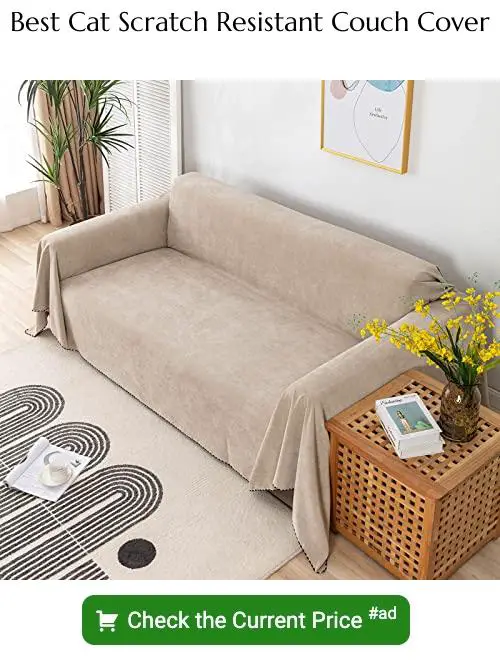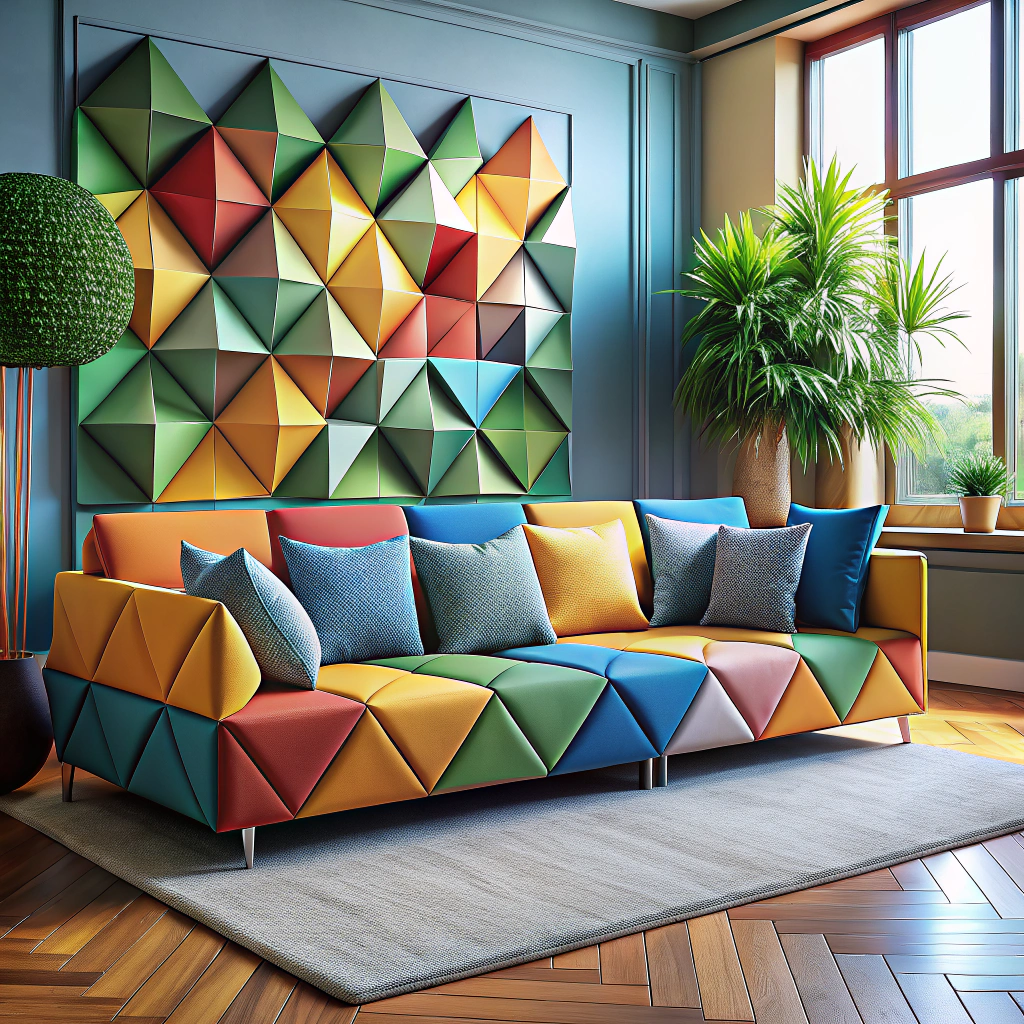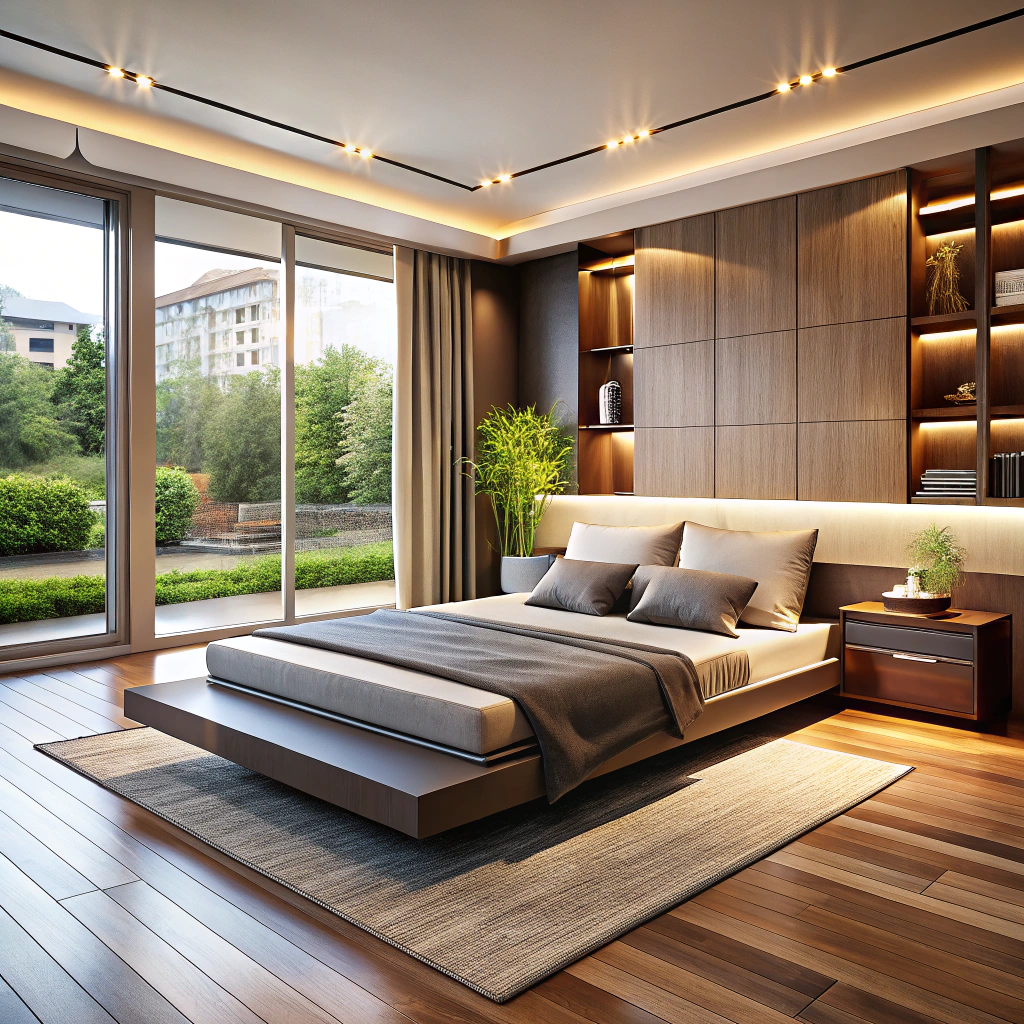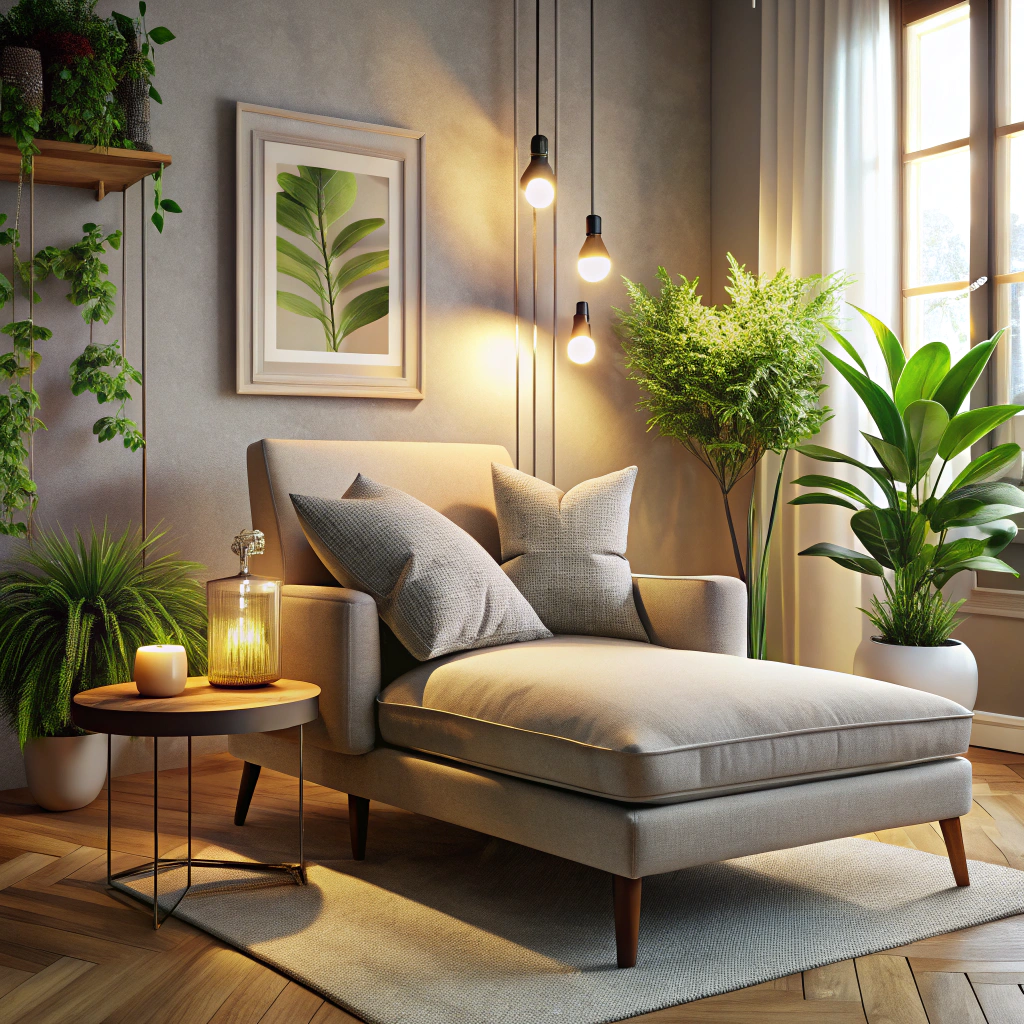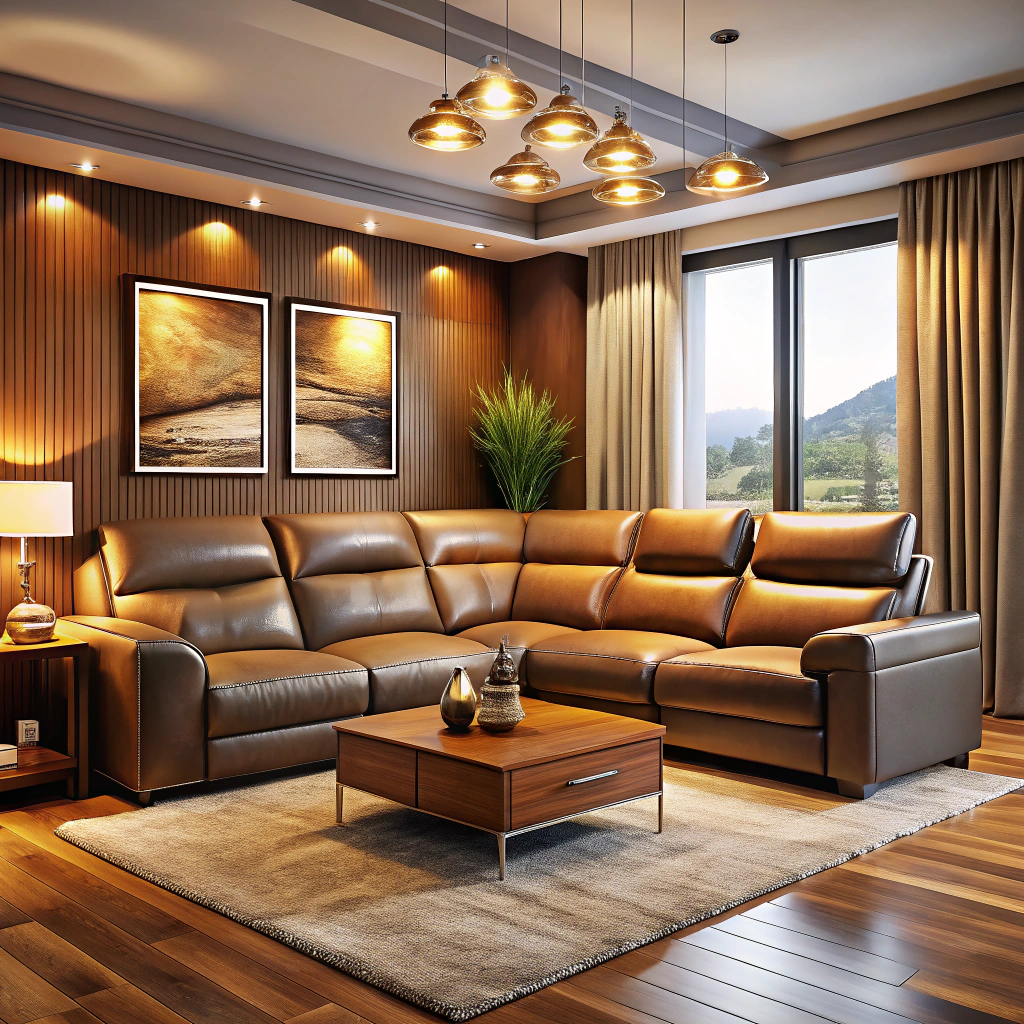Last updated on
Discover the perfect couch material to keep your feline friends comfortable and your furniture scratch-free in this insightful guide.
Cats are amazing pets to have around. They are cute, cuddly, and have a personality that can brighten up any room.
However, as much as we love our feline friends, they can be quite destructive when it comes to furniture. If you’re a cat owner, you know how frustrating it can be to see your beloved couch being scratched or damaged by your kitty’s claws.
That’s why choosing the right material for your couch is crucial if you want it to last long and stay in good condition despite having a cat at home. In this article, we’ll discuss the best materials for couches that are suitable for cats so that you can make an informed decision when buying new furniture for your home.
Key takeaways:
- Canvas, denim, tweed, and wool blends are durable and resistant to scratches.
- Leather and faux leather hide scratches well.
- Microfiber is resistant to stains and scratches.
- Suede and ultrasuede need protective covers or darker colors.
- Outdoor fabrics like Sunbrella are durable and easy to clean.
Table of Contents
Durable Fabrics for Cat Owners
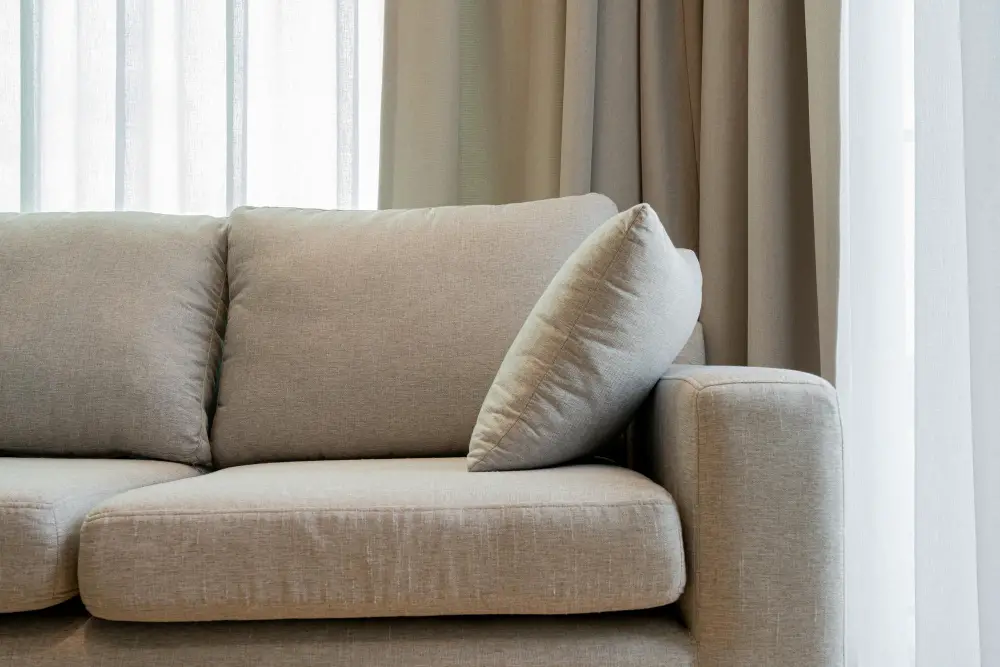
One popular choice is canvas, which is known for its durability and resistance to scratches. Canvas also has a tight weave that makes it difficult for cats to sink their claws into.
Another option is denim, which not only looks great but also holds up well against cat scratches. Denim’s thick texture makes it resistant to tears and punctures while still being comfortable enough for lounging.
If you’re looking for something more luxurious than canvas or denim, consider investing in a couch made from tweed or wool blends. These fabrics are tightly woven with natural fibers that make them strong enough to resist scratching while providing an elegant look suitable even in formal living rooms.
Leather and Faux Leather Couches

Leather is a natural material that can withstand the wear and tear of daily use, making it an excellent option for households with pets. Faux leather, on the other hand, offers similar benefits as real leather but at a more affordable price point.
One thing to keep in mind when choosing a leather or faux-leather couch is that cats may still scratch them if they feel like it. However, unlike fabric sofas where scratches can be easily visible and difficult to repair, scratches on these materials tend not to show up as much or at all.
When selecting between real or fake options consider your budget since genuine leathers are typically more expensive than synthetic ones. Additionally think about how you want your sofa’s texture; while authentic hides have unique markings such as scars from insect bites which add character some people prefer uniformity found in man-made materials.
Microfiber Options for Pet-Proofing

This synthetic fabric is made of tightly woven fibers that are resistant to stains, spills, and scratches. Microfiber couches are also easy to clean and maintain since they don’t absorb liquids or odors like other materials do.
One of the best things about microfiber couches is that they come in a variety of colors and patterns, so you can easily find one that matches your home decor style. Plus, many microfiber options have a suede-like texture which adds an extra layer of comfort for both you and your furry friend.
When it comes to durability against cats’ claws, microfibers hold up well compared with other fabrics such as linen or cotton blends. However, it’s important not to let your cat scratch on any material if possible because even the most durable fabrics will eventually show signs of wear over time.
Suede and Ultrasuede Solutions
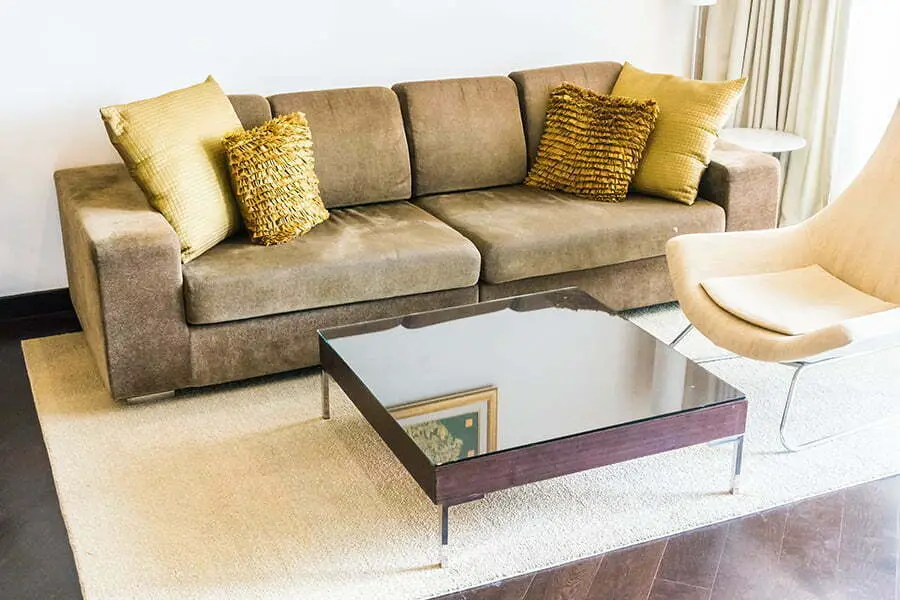
They may not be the best choice for cat owners as they can easily get scratched or damaged by your furry friend’s claws. If you’re set on getting a suede or ultrasuede couch, there are some solutions that can help protect it from your cat’s scratching habits.
One option is to choose a darker color that will hide any scratches better than lighter shades. You could also opt for an ultrasuede material with a tighter weave which makes it more resistant to damage caused by cats’ claws.
Another solution is using protective covers specifically designed for suede and ultrasuede furniture pieces. These covers come in various sizes and colors, so you’ll have plenty of options when choosing one that matches your decor style.
Lastly, consider providing alternative scratching surfaces such as scratch pads or posts near the sofa area so that cats have something else to scratch besides the furniture itself.
Outdoor Fabrics for Indoor Use
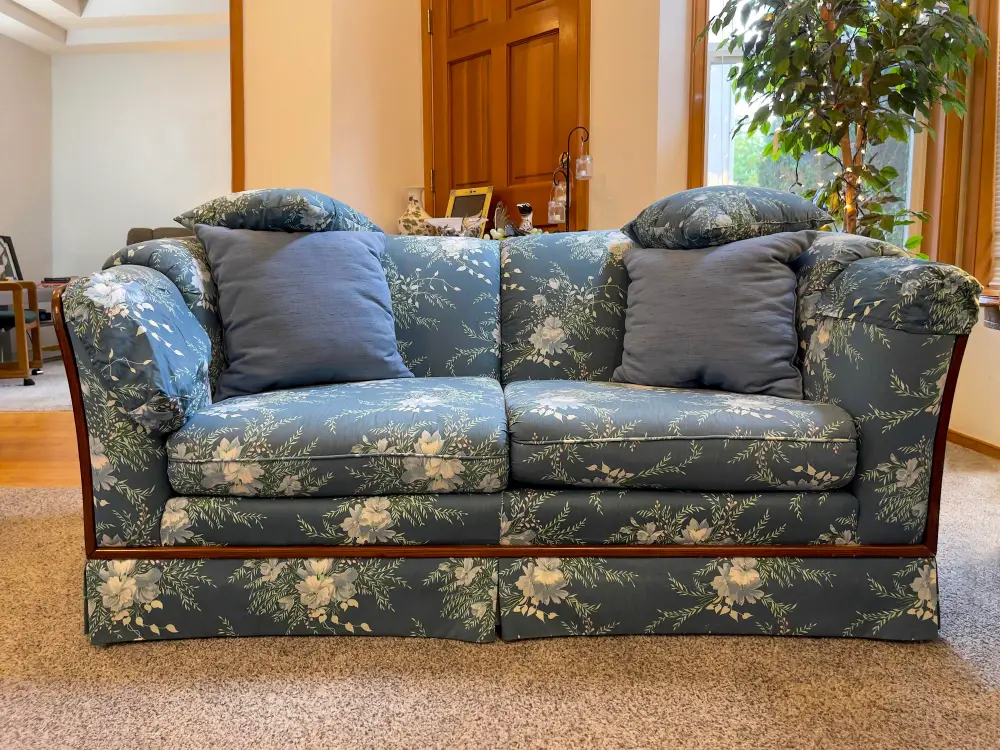
These materials are designed to be durable and resistant to fading, stains, and water damage. They also tend to be easy to clean since they’re made with synthetic fibers that repel dirt.
While outdoor fabrics may not seem like the most comfortable choice at first glance, many manufacturers have started creating indoor furniture using these materials. You can find couches made with Sunbrella or other high-performance textiles that look just as stylish as traditional upholstery but offer superior durability.
One thing to keep in mind when choosing an outdoor fabric is its texture. Some options may feel rougher than others due to their intended use outdoors; however, there are plenty of soft-touch options available too! it’s essential always check if the fabric has any harmful chemicals before purchasing it.
Scratch-Resistant Textiles
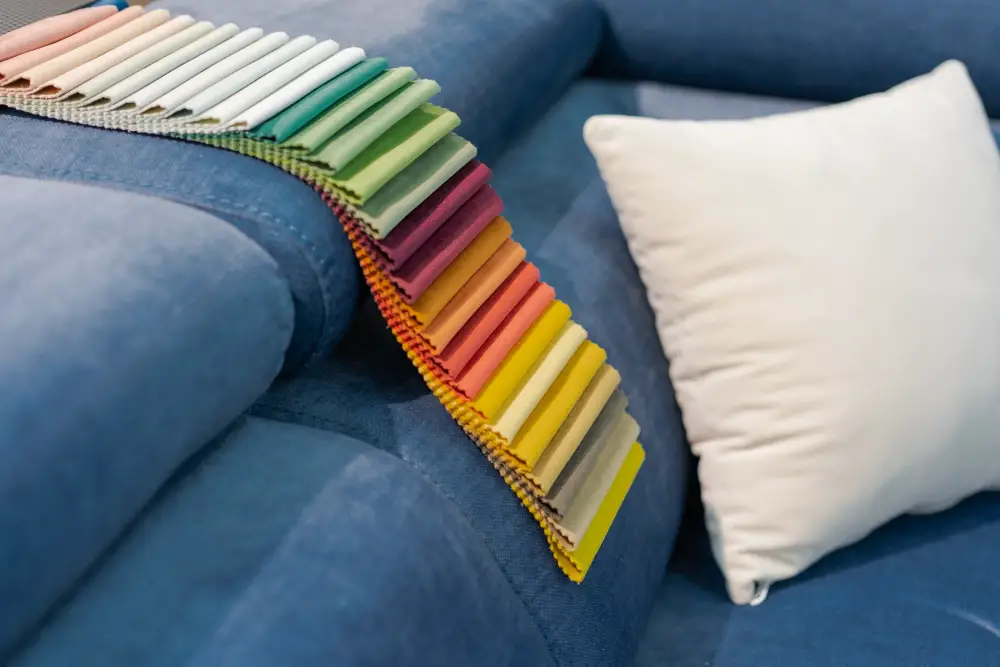
These fabrics are designed to be durable and resistant to scratches, making them ideal for pet owners. Scratch-resistant textiles come in various materials such as polyester blends or tightly woven fabrics like canvas.
One of the most popular scratch-resistant textile options is Crypton fabric. This synthetic material is known for its durability and resistance to stains, odors, and bacteria growth.
It also has a moisture barrier that prevents liquids from penetrating the fabric fibers.
Another great option is heavy-duty denim or twill cotton upholstery fabric with high thread counts which makes it more difficult for cats’ claws to penetrate through the weave of the cloth.
When choosing scratch-resistant textiles make sure they have tight weaves so that your cat’s nails won’t get caught in loose threads causing damage over time. .
Velvet Sofas and Cat Compatibility
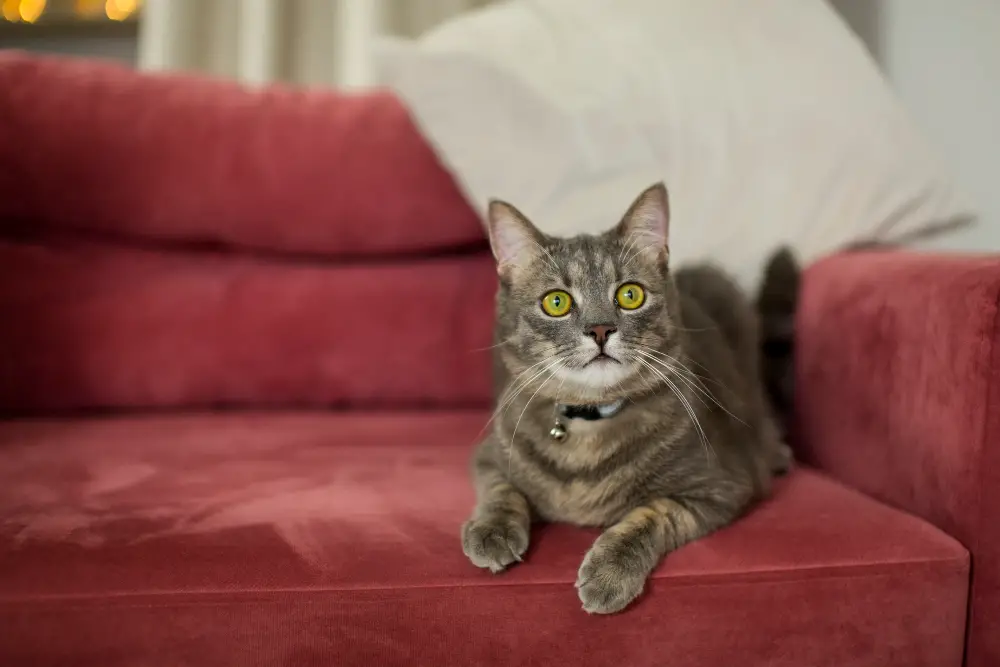
When it comes to cats, velvet may not be the best option. While velvet is soft and comfortable for humans, it can easily attract cat hair and become a scratching post for your furry friend.
If you’re set on getting a velvet sofa but also want to keep your cat’s claws away from it, there are some things you can do. One solution is to choose darker colors that will hide any scratches or marks left by your pet.
Another option is to use protective covers or throws that will prevent damage while still allowing you and your cat to enjoy the comfort of the couch.
It’s important also consider how often you’ll need clean up after pets if they shed frequently as this could affect how well-suited certain materials like Velvet Sofas would be in homes with cats.
Sunbrella-Covered Couches for Feline Owners
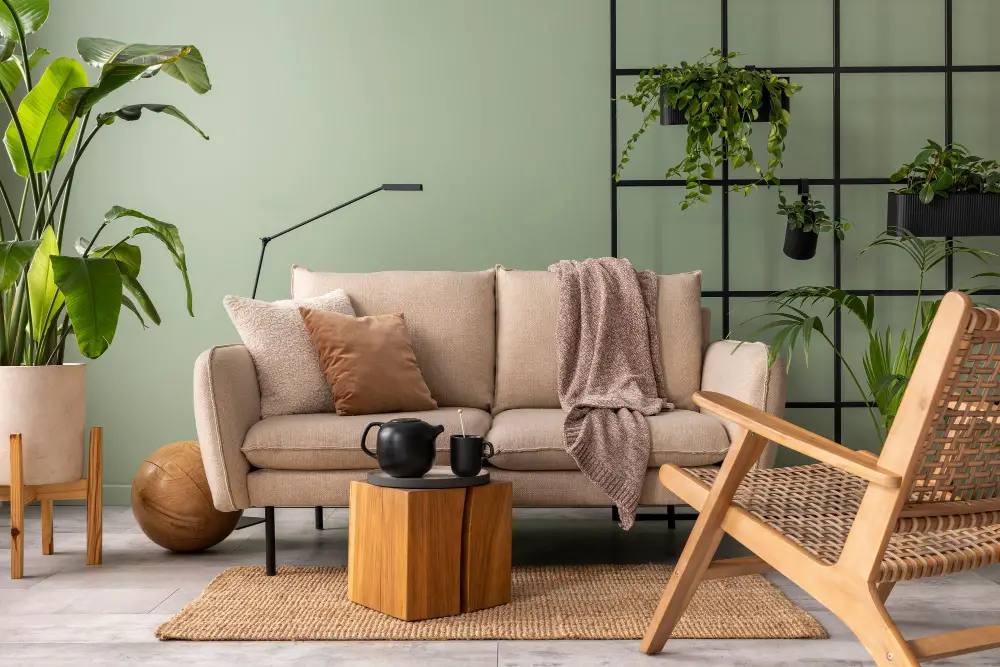
This type of fabric is known for its durability and resistance to stains, fading, and water damage. It’s also easy to clean with just soap and water.
Sunbrella-covered couches come in various colors and patterns that can match any home decor style. They are perfect if you want a sofa that looks great while being functional at the same time.
One thing to keep in mind when choosing Sunbrella as your couch material is its thickness. The thicker the fabric, the more resistant it will be against scratches from cats’ claws.
Choosing the Right Color and Pattern

While you may be tempted to go for a light-colored sofa that complements your home decor, it’s essential to remember that cats shed hair and can leave stains on furniture. Therefore, darker colors such as brown or black are more practical options as they can hide pet hair and dirt better than lighter shades.
In terms of patterns, avoid intricate designs with lots of details or textures that could attract your cat’s attention. Instead, opt for simple patterns like stripes or solids which will not only look great but also make cleaning easier in case of any spills.
Importance of Couch Material Thickness

A thicker fabric or leather will be more durable and resistant to scratches than a thinner one. Cats have sharp claws that can easily tear through thin materials, leaving unsightly marks on your furniture.
Thicker materials also provide better insulation and comfort for your furry friend. They are less likely to get damaged by cat hair or dirt, making them easier to clean and maintain in the long run.
However, keep in mind that thicker materials may come at a higher cost compared with their thinner counterparts. It’s essential to weigh the benefits of durability against affordability when selecting a couch material suitable for cats.
The Role of Odor Resistance
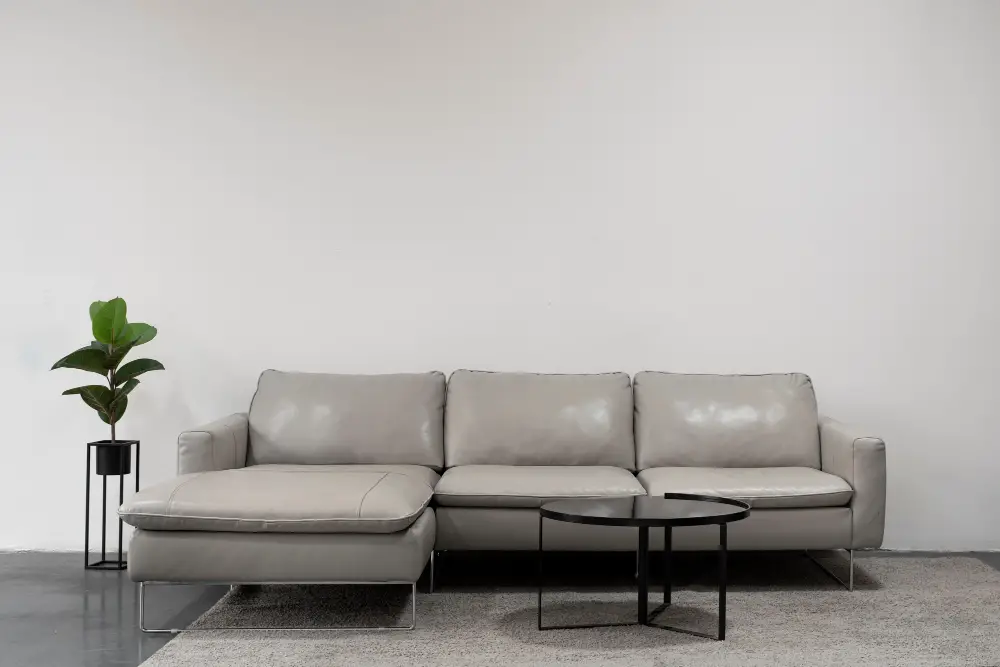
This odor can linger on furniture and fabrics, making your home smell unpleasant. That’s why it’s essential to choose couch materials that are resistant to odors caused by pets.
Fabrics like leather and microfiber are excellent choices for cat owners because they don’t absorb smells as much as other materials do. Some manufacturers offer special coatings or treatments that help repel pet odors from sticking onto the fabric.
When shopping for a cat-friendly couch material, look for options with antimicrobial properties since these prevent bacteria growth which causes bad smells over time. You may also want to consider using air purifiers in your home if you’re concerned about pet-related scents lingering around.
Washing and Cleaning Tips
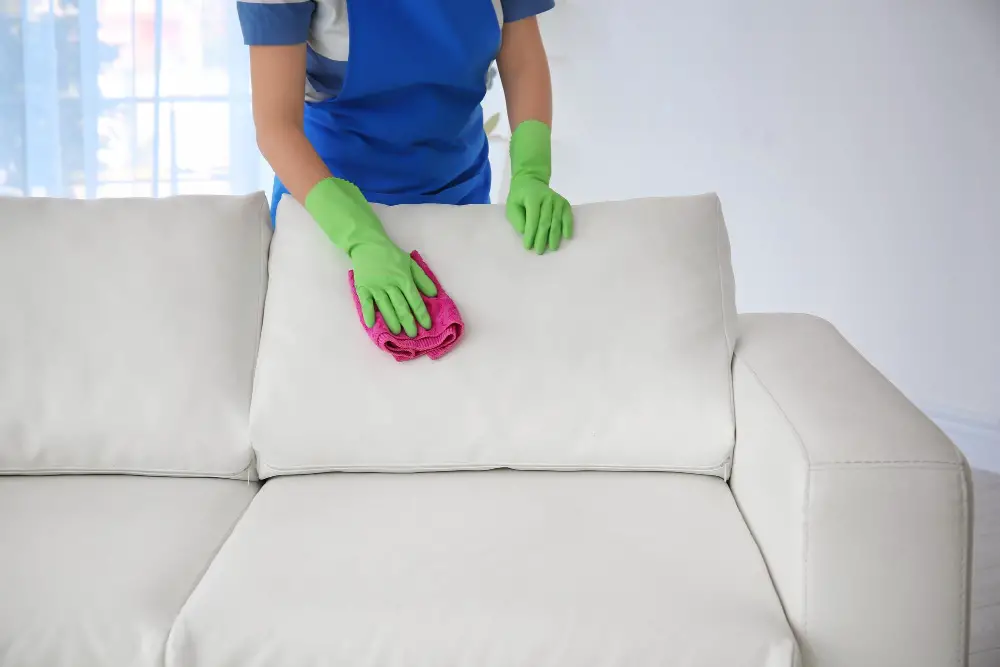
Whether it’s fur, dirt or stains from accidents, cleaning your cat-friendly couch is essential to keep it looking and smelling fresh. When washing or cleaning your sofa, always follow the manufacturer’s instructions to avoid damaging the material.
For fabric sofas with removable covers, machine-wash them in cold water using a gentle cycle and mild detergent. Avoid using bleach or fabric softeners as they can damage the fibers of the material.
If you have a leather sofa that needs cleaning, use a damp cloth to wipe off any dirt or spills immediately before they set in.
For tough stains like urine or vomit on any type of couch material (except suede), mix equal parts white vinegar and water in a spray bottle and apply it directly onto the stain area until saturated. Let sit for 10-15 minutes before blotting with paper towels until dry.
Prevention is key when dealing with cat-related messes on furniture; consider investing in washable throws that you can easily remove when needed instead of constantly washing an entire cover/couch cushion.
Preventive Measures to Protect Couches

One of the most effective ways is by providing your feline friend with a scratching post or pad. Cats love to scratch, and if they don’t have an appropriate outlet for this behavior, they will likely turn their attention towards your couch.
Another way to prevent damage is by trimming your cat’s nails regularly. This will not only reduce the risk of scratches but also keep them healthy and comfortable.
You can also use deterrents such as double-sided tape or aluminum foil on areas where cats tend to scratch frequently. These materials make it uncomfortable for cats and discourage them from scratching in those spots.
Lastly, consider covering up vulnerable areas of your couch with blankets or slipcovers when you’re not using it. This extra layer provides an added barrier against scratches while keeping pet hair off the upholstery.
Cat-Friendly Sofa Features
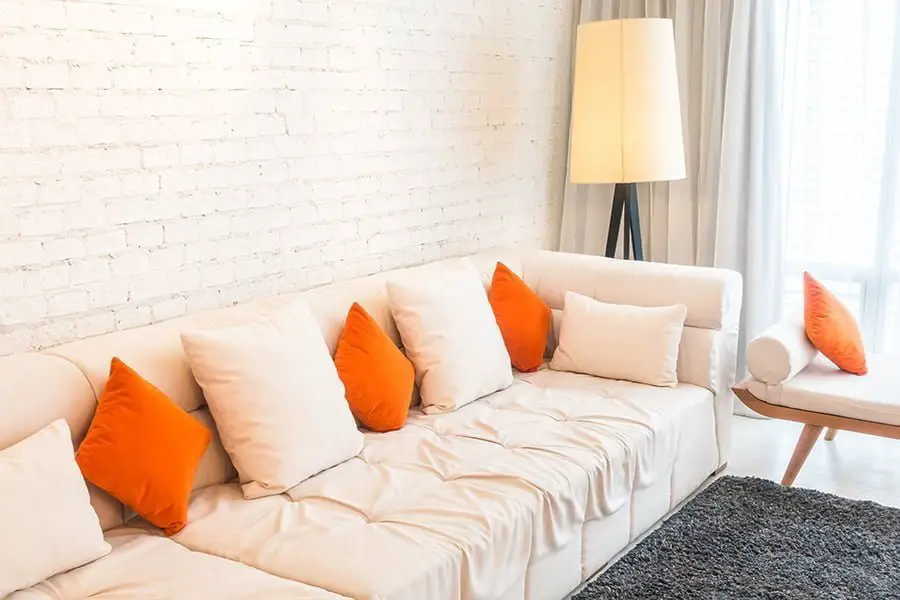
These features can help make your sofa more comfortable and durable for both you and your feline friend. One of the most important things to consider is the material of the couch itself, but there are other factors that can also play a role in making it more cat-friendly.
For example, some sofas come with removable covers or cushions that can be easily washed or replaced if they become damaged by scratches or spills. This feature not only makes cleaning easier but also extends the life of your furniture.
Another useful feature is having high legs on your sofa as this allows cats to crawl underneath without getting stuck between cushions which could lead them scratching their way out causing damage in turn.
Lastly, consider investing in a scratching post so that cats have an alternative place where they can scratch instead of using your furniture as their personal scratching pad.
Maintaining Couches in a Home With Cats
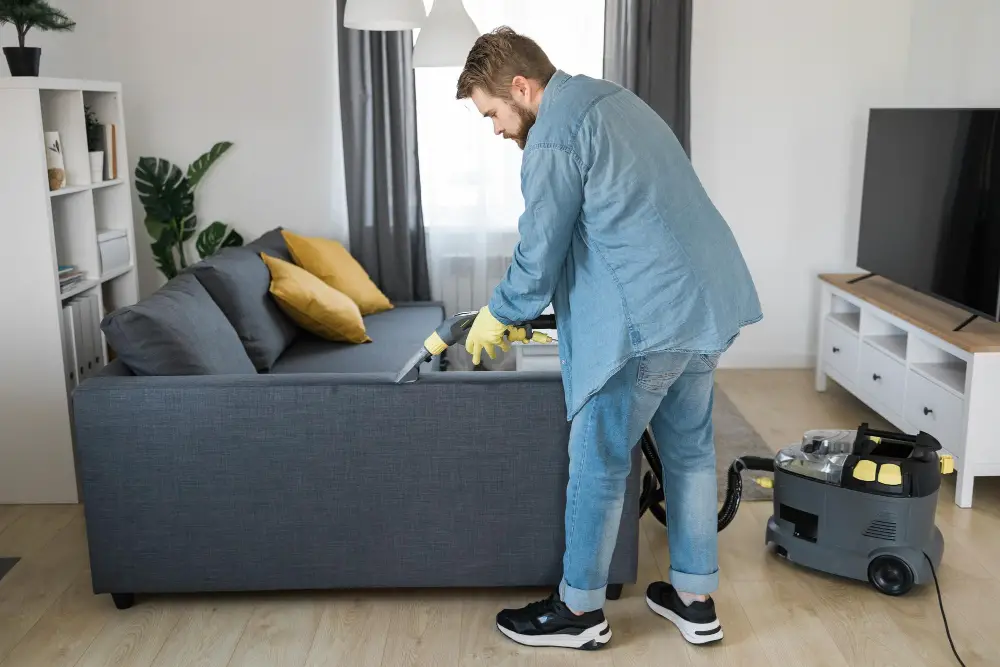
Regular cleaning and maintenance can help extend the life of your furniture and keep it looking new for longer. One way to do this is by vacuuming or brushing off any loose fur or debris from the surface of your couch regularly.
If you notice any stains on your sofa, be sure to clean them up as soon as possible using a pet-safe cleaner that won’t damage the fabric. Avoid using harsh chemicals that could harm both cats and humans alike.
Another important aspect of maintaining cat-friendly couches is investing in scratch-resistant covers or sprays that deter cats from scratching at their surfaces. You can also provide alternative scratching posts around the house so they have somewhere else to satisfy their natural urge without damaging furniture.
Lastly, consider placing throws over high-traffic areas where pets tend to sit frequently; this will protect against wear-and-tear while adding an extra layer of comfort for both you and your furry friend.
Matching Style With Functionality
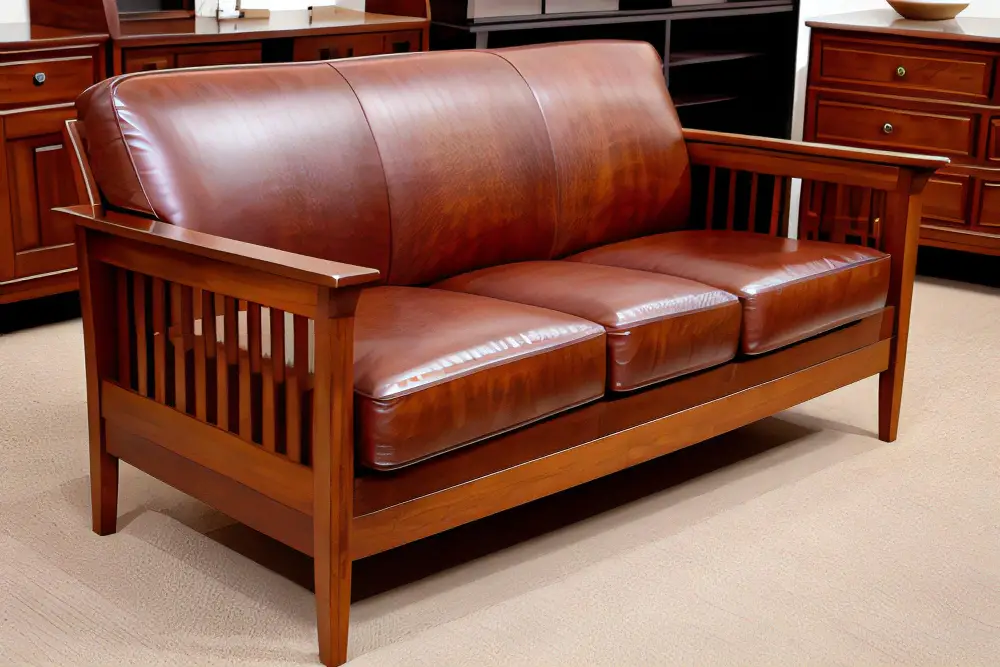
While durability and scratch-resistance are essential factors, you also want a couch that complements your interior design. Fortunately, there are plenty of options available that offer both practicality and aesthetics.
For instance, leather or faux leather sofas provide a sleek look while being easy to clean. Microfiber fabrics come in various colors and patterns while being resistant to stains caused by pet hair or spills.
Suede materials add texture without sacrificing durability.
It’s important not only to choose the right material but also the appropriate color scheme for your space. Neutral tones like beige or gray work well with any decor style while darker shades like navy blue can make a bold statement in modern interiors.
Cost Considerations for Couch Materials

While some materials may be more expensive than others, investing in quality furniture can save you money in the long run. When choosing a cat-friendly couch material, keep in mind that cheaper options may not be as durable or resistant to scratches and stains.
Leather and microfiber are popular choices for pet owners due to their durability and ease of cleaning. However, they tend to be on the pricier side compared with other fabrics like cotton or linen.
If you’re on a budget but still want something that can withstand your cat’s claws, outdoor fabrics such as Sunbrella might be worth considering. They are designed for outdoor use but work well indoors too since they are water-resistant and easy-to-clean.
Top Picks for Cat-Resistant Couches
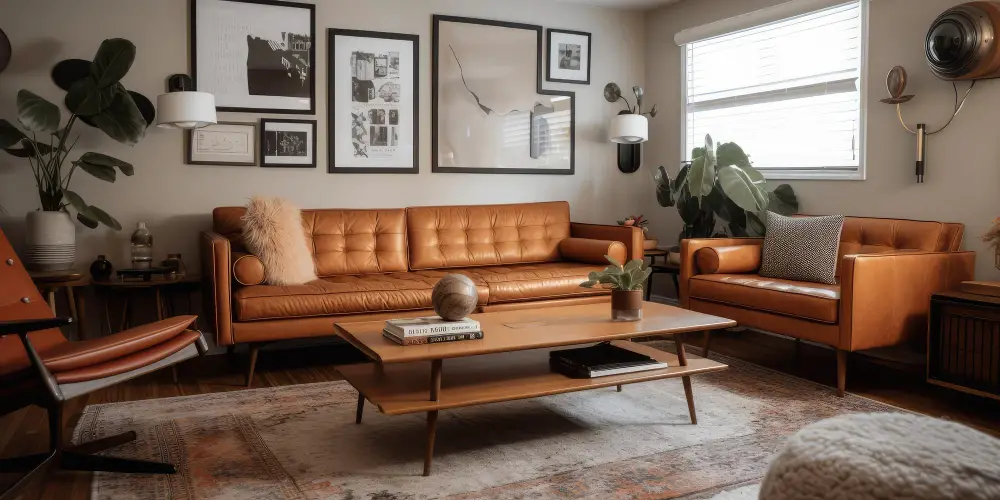
These options are not only durable and scratch-resistant but also stylish and comfortable.
First on our list is the leather or faux leather couch. This material is easy to clean, doesn’t attract fur, and can withstand scratches from your feline friends’ claws.
It’s also a classic look that never goes out of style.
Next up is microfiber fabric which has become increasingly popular in recent years due to its durability and resistance to stains. It’s an excellent choice for pet owners as it repels hair while being soft enough for cats to snuggle up on.
Another great option is outdoor fabrics such as Sunbrella that are designed specifically for outdoor use but work just as well indoors with pets around. They’re resistant to water damage, fading from sunlight exposure, and most importantly – scratching!
Lastly, velvet sofas may seem like an unlikely choice when it comes to cat-friendly furniture; however many modern velvet materials come with built-in stain protection making them easier than ever before to maintain even if you have furry friends at home.
Final Thoughts On Cat-Friendly Couches
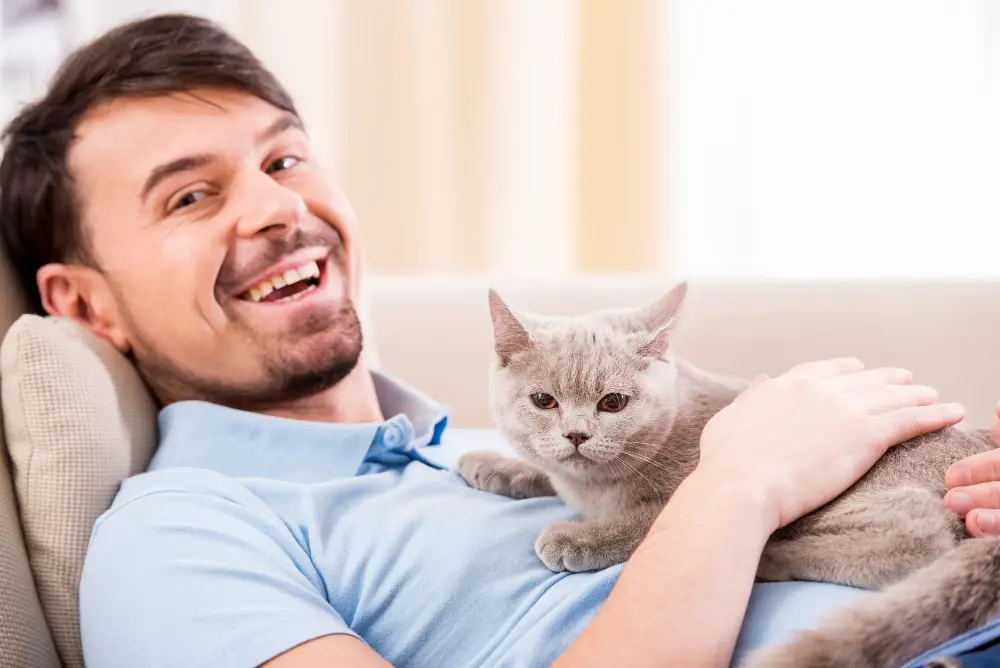
The right fabric can make all the difference in keeping your furniture looking great while also providing comfort and durability for your furry friend. When selecting a couch material, consider its scratch resistance, washability, odor resistance and thickness to ensure it meets both you and your cat’s needs.
Remember that preventive measures are key when protecting your furniture from scratches or damage caused by cats. Providing scratching posts or pads can help redirect their attention away from the sofa while trimming their nails regularly will reduce potential harm to fabrics.
There are many options available when it comes to finding a suitable couch material for homes with cats. By taking into account our recommendations on materials such as leather or microfiber along with other considerations like color choice and cost-effectiveness; you’ll be able to find an ideal solution that works best for both you and your feline companion!
FAQ
What is the best material couch for cats?
The best material couch for cats is synthetic and microfiber couches, such as polyester, nylon, suede, and acrylic upholstery blends, due to their extremely thin and tough fabric fibers, making them more scratch-proof.
What sofa material is cat proof?
The cat-proof sofa material is microfiber or microsuede, as they are budget-friendly and feature tightly woven threads that are difficult for cats to dig into.
What is the best fabric for cats to scratch?
The best fabric for cats to scratch is sisal fabric, as it becomes softer when scratched, encouraging more use.
Which upholstery materials can withstand a cat’s claws most effectively?
Upholstery materials like microfiber, leather, and tightly woven fabrics can withstand a cat’s claws most effectively.
What are the top furniture fabrics for homes with multiple cats?
Top furniture fabrics for homes with multiple cats are microfiber, leather, and synthetic materials such as outdoor fabrics.
How do different sofa materials impact cat allergies and shedding management?
Sofa materials can impact cat allergies and shedding management differently, where synthetic, tightly woven, and water-resistant fabrics typically reduce allergens and minimize fur accumulation compared to more porous, textured, and natural materials.
